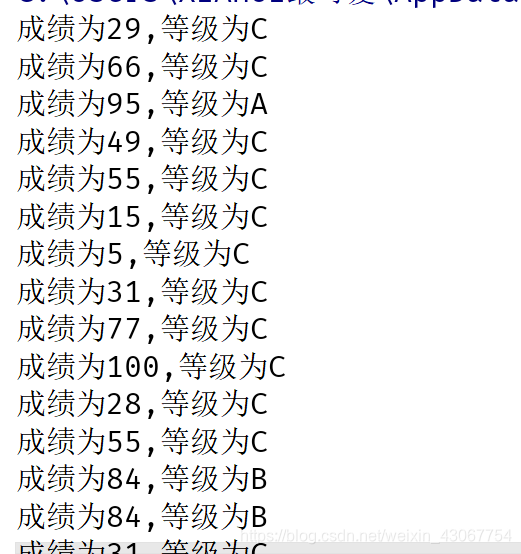python - 函式的返回值
阿新 • • 發佈:2018-12-21
1.函式呼叫時一般有返回值,沒有定義返回值的時候,python中預設返回None
def hello():
print('hello')
res = hello()
print(res)
輸出:
hello
None
2.return
def hello():
# return 返回的表示式或者變數
return 'hello'
res = hello()
print(res)
輸出:
hello
3.return的應用
要求:
1.隨機生成20個學生的成績
2.判斷這個20個學生的等級
import random def get_level(score): if 90 < score <= 100: return 'A' elif 80 < score <= 90: return 'B' else: return 'C' def main(): for i in range(20): score = random.randint(1,100) print('成績為%s,等級為%s' %(score,get_level(score))) #注意這裡函式呼叫的方法

4.多個返回值
def fun(a): # 接收一個列表,求這個列表的最大值,平均值,最小值 max_num = max(a) min_num = min(a) avg_num = sum(a) / len(a) # python函式中,只能返回一個值 # 如果非要返回多個值,會把返回的值封裝為一個元組資料型別 return max_num, min_num, avg_num variables = fun([34, 1, 2, 3, 4, 5, 6, 7, 421]) #函式可以直接引數輸入一個列表 print(variables, type(variables))
輸出:
(421, 1, 53.666666666666664) <class 'tuple'>
#多個返回值結果封裝成元組
